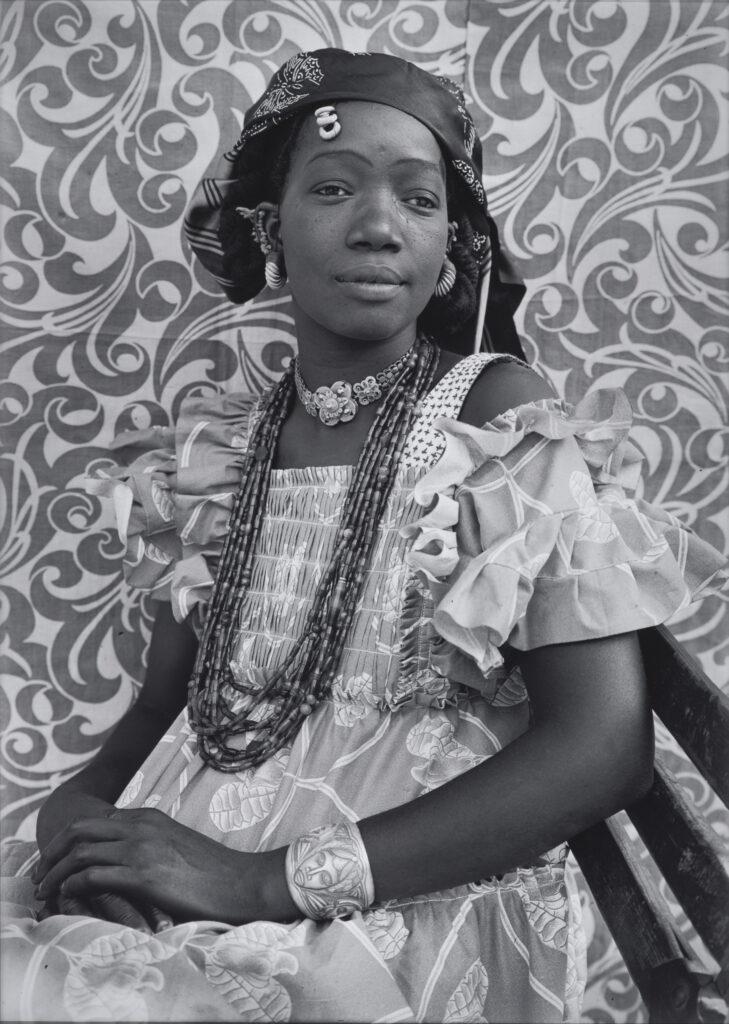Untitled #277 (work of art)
Información sobre la obra de arte
Ideas clave sobre esta obra de arte
- This is a photograph of a young Malian woman seated in front of a patterned backdrop. She wears a floral dress with ruffled sleeves and a variety of metal and beaded jewelry. Her head is partially covered by a silk scarf.
- Seydou Keïta’s photography shows the transition from tradition to modernity during the mid-20th century. His work depicts the city lifestyle in Mali’s capital, Bamako, following the country’s independence from France.
- This photograph was made using a gelatin-silver printing process. Gelatin-silver printing is the most common process for making black-and-white photographs.
- Even though Keïta was a self-taught photographer, he quickly rose to fame as a portrait artist and became the Malian government’s official photographer.
Más información
Seydou Keïta was a self-taught portrait photographer. He set up a photography studio in his backyard, in Bamako, in the late 1940s. He began creating his studio portraits around the same time that his country gained independence from France. Many people moved from the Mali countryside to the capital city of Bamako during this time. People in the city often commissioned portraits to send to their families in outlying areas.
Keïta’s photography is a visual record of the emerging urban lifestyle in Bamako. This was a hopeful time for Malians. They were transitioning from being a French colony to becoming an independent country. Keïta’s images show how people’s ideas about beauty, success, and identity changed in the postcolonial era.
The young woman in this portrait wears formal clothing, a silk headscarf, and different styles of jewelry. Some of these items may have been provided by Keïta’s studio. The jewelry has roots in both modern and traditional styles. The style of the choker necklace in this photo was popular throughout West Africa.
Many of Keïta’s photographs were made using the gelatin-silver printing process. Gelatin-silver printing became the most popular process for creating black-and-white photos. The film was covered with a mixture of gelatin and silver halides. After it dried, the paper was exposed to light through a photo negative. The image was developed by placing the paper in chemicals that react to gelatin and silver.
Keïta was selected to be the official photographer for the Malian government. His legacy lives on through the Seydou Keïta foundation in Bamako. The foundation preserves Keïta’s work and supports young African artists.
Recursos adicionales
Recursos para los profesores:
- Read an article about Seydou Keïta.
- Visit the artist’s website to learn more about his life and work.
- Watch a video about Keïta’s portraiture.
Recursos para los estudiantes:
- Watch a video about the gelatin-silver printing process.
- Read an article to learn more about Keïta.
- Watch a video of Keïta’s 2016 exhibition at the Grand Palais in Paris.

